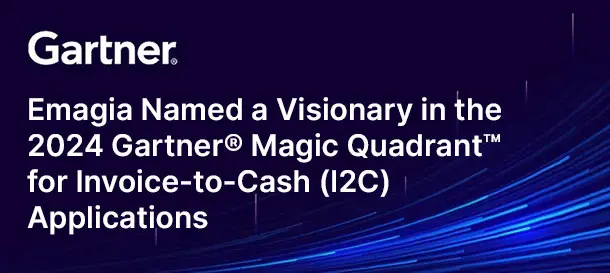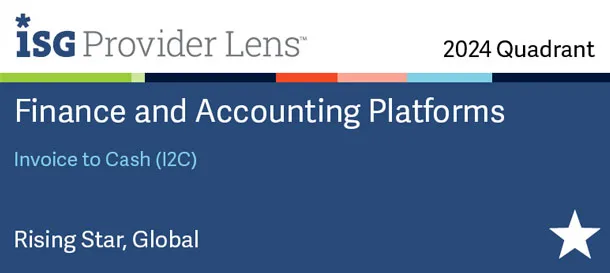The rapid evolution of AI in Order-to-Cash (O2C) is redefining how finance teams manage working capital efficiency. As organizations step into 2026, the convergence of automation, predictive analytics, and digital finance transformation enables CFOs and finance leaders to accelerate cash flow, minimize Days Sales Outstanding (DSO), and optimize liquidity with precision. This article offers a comprehensive exploration of how intelligent O2C processes can strengthen financial performance and streamline operations across global enterprises.
Understanding the Order-to-Cash Cycle
The Order-to-Cash process is the financial backbone of any enterprise, connecting revenue generation to liquidity realization. It spans every stage from order management and credit assessment to invoicing, payment collection, and reconciliation. In traditional systems, this cycle is riddled with manual touchpoints, delays, and errors, which extend DSO and weaken cash conversion efficiency. AI and automation technologies are now transforming these pain points into opportunities for predictive control and operational excellence.
Why Working Capital Efficiency Matters in 2026
Working capital efficiency measures how effectively a company manages its short-term assets and liabilities to maintain liquidity. In 2026’s dynamic business climate, where global volatility and interest rate fluctuations persist, improving cash flow visibility and agility has become a strategic imperative. Companies that leverage AI-driven finance operations experience stronger resilience and profitability, thanks to predictive insights and faster revenue realization.
The Link Between Order-to-Cash and Cash Flow Optimization
Every delayed invoice, unresolved deduction, or misapplied payment affects working capital health. AI-enabled O2C systems use real-time data analytics and automation to ensure faster invoice delivery, quicker dispute resolution, and intelligent cash application all of which collectively shorten the cash conversion cycle. With these efficiencies, enterprises unlock trapped cash and maintain operational flexibility without increasing financial risk.
The Role of AI and Intelligent Automation in O2C
Artificial Intelligence acts as the analytical engine driving the next wave of finance modernization. By embedding Machine Learning (ML), Natural Language Processing (NLP), and Optical Character Recognition (OCR), AI in O2C automates repetitive workflows, improves data accuracy, and enhances customer experience. Finance leaders no longer depend solely on human-driven interventions; instead, they leverage systems that predict, decide, and act autonomously.
Core AI Technologies Powering O2C Efficiency
- Machine Learning (ML): Learns from transaction histories to forecast payments and detect anomalies.
- Natural Language Processing (NLP): Interprets unstructured data such as emails and remittance notes to automate communication workflows.
- Optical Character Recognition (OCR): Extracts information from invoices and payment documents instantly, eliminating manual data entry.
- Robotic Process Automation (RPA): Executes repetitive finance tasks like data validation, reconciliations, and updates with high accuracy.
- Generative AI: Synthesizes contextual insights, automates decision support, and generates dynamic forecasting narratives for finance teams.
AI in Order-to-Cash: The CFO’s Strategic Lens
CFOs play a pivotal role in aligning automation investments with enterprise growth objectives. As AI reshapes financial operations, the modern CFO is expected to evolve from a controller of numbers to a creator of value. By embracing predictive intelligence, CFOs can proactively manage credit risk, enhance working capital efficiency, and maintain strategic control over liquidity.
From Data-Driven to Decision-Driven Finance
Data-driven finance is no longer sufficient. The future of finance is decision-driven, where AI transforms analytics into autonomous actions. For example, predictive algorithms can suggest optimal collection sequences or highlight at-risk customers before defaults occur. This shift allows CFOs to move from reactive reporting to proactive financial strategy, reinforcing resilience across volatile markets.
Digital Transformation as a Foundation
To fully harness AI’s potential in O2C, enterprises must establish a robust digital foundation. Integration across ERP systems such as SAP, NetSuite, and Oracle ensures that order, billing, and collection data flow seamlessly into analytics platforms. This synchronization supports real-time monitoring of cash positions, enabling finance teams to make informed, timely decisions that enhance capital efficiency.
Key Benefits of AI-Driven Order-to-Cash Automation
- Reduced DSO: Predictive analytics and automated reminders help collect cash faster.
- Enhanced Cash Forecasting: Machine learning models generate accurate predictions based on payment behaviors.
- Improved Customer Experience: Faster dispute resolution and self-service options strengthen B2B relationships.
- Operational Efficiency: Automation minimizes manual work, errors, and cycle times.
- Stronger Compliance: Built-in audit trails and data validation improve regulatory confidence.
Predictive Analytics and Machine Learning in Working Capital Management
Predictive analytics empowers finance teams to anticipate customer payment patterns and liquidity needs. Machine Learning algorithms can segment customers based on payment behaviors and assign tailored collection strategies. This data-driven prioritization increases collection success rates and reduces bad debt exposure, driving a more efficient working capital structure.
Proactive Risk Mitigation Through Predictive Collections
Predictive collections management leverages AI to rank overdue accounts by risk, probability of payment, and strategic importance. Instead of reacting to missed payments, finance teams proactively target high-risk accounts early. This approach not only accelerates recovery but also preserves customer relationships through personalized engagement.
AI in Invoicing, Payments, and Dispute Management
AI-powered invoicing systems ensure accuracy, speed, and consistency across billing operations. They automatically validate invoice data against purchase orders and delivery notes to reduce exceptions. In dispute and deduction management, NLP algorithms extract issue details from emails and ticket logs, automatically categorizing and routing them for faster resolution.
Automated Cash Application and Real-Time Reconciliation
Automated cash application uses AI to match payments with open invoices in real-time, even when remittance data is incomplete. This eliminates tedious manual matching and shortens reconciliation cycles. With real-time dashboards, finance teams gain instant visibility into unapplied cash, improving forecasting and reporting accuracy.
Preparing for the Future: AI-Driven Finance in 2026 and Beyond
As we approach 2026, AI in Order-to-Cash is evolving from a competitive advantage into a necessity. Enterprises that embrace AI-powered finance operations not only achieve higher working capital efficiency but also future-proof their organizations against disruption. The next frontier involves self-learning systems that autonomously manage end-to-end O2C cycles, delivering continuous optimization without human intervention.
Advanced AI Applications Transforming the Order-to-Cash Function
After understanding the fundamentals of AI in Order-to-Cash (O2C), the next step is exploring how advanced AI technologies are delivering real-world impact on working capital performance. From proactive risk management to dynamic cash forecasting, enterprises are leveraging data intelligence to streamline every financial touchpoint. The evolution of automation into cognitive, self-learning systems marks a shift toward true financial autonomy.
AI-Driven Credit Risk Assessment
AI in O2C is revolutionizing credit management by enabling finance teams to evaluate customer risk profiles in real time. Machine Learning algorithms analyze historical payment data, behavioral patterns, and macroeconomic indicators to predict default probabilities. This allows finance leaders to extend smarter credit terms while reducing exposure to bad debts. Over time, predictive credit scoring improves both revenue reliability and liquidity control.
Intelligent Order Processing and Validation
In traditional finance operations, order validation requires cross-verifying data across ERP and CRM systems, often leading to delays. AI automates this verification process by matching customer orders against purchase history, payment terms, and inventory data. NLP algorithms identify discrepancies or missing information instantly, ensuring only valid, compliant orders enter the system. This accelerates the Order-to-Cash cycle and enhances working capital flow.
Automated Invoicing and Payment Reconciliation with AI
AI-powered invoicing automation eliminates one of the largest friction points in the O2C process. Using Optical Character Recognition (OCR) and Machine Learning, invoices are auto-generated, validated, and dispatched to customers in seconds. AI can even personalize invoice templates based on customer preferences or jurisdictional compliance requirements. Automated reminders and follow-ups further ensure timely payments, improving cash flow predictability.
AI in Real-Time Payment Reconciliation
AI-driven payment reconciliation matches transactions across bank feeds, remittances, and ERP entries in real time. Deep learning models identify probable matches even when payment data is incomplete or misaligned. The result is faster closure of accounting periods and a dramatic reduction in unapplied cash. Finance teams gain visibility into the entire payment lifecycle, empowering better forecasting and liquidity decisions.
Predictive Analytics for Cash Flow Optimization
Predictive analytics is central to enhancing working capital efficiency. It uses historical and live data to forecast future cash inflows and outflows. By integrating predictive models into O2C systems, CFOs can anticipate cash shortages, optimize investment timing, and adjust credit or collection strategies before issues arise. Predictive insights also help in minimizing DSO and maintaining liquidity buffers in uncertain markets.
Dynamic Forecasting with Machine Learning
Traditional forecasting methods rely on static models. AI-based forecasting evolves continuously by learning from real-time inputs such as invoice aging, customer payment behavior, and market fluctuations. ML algorithms can simulate multiple financial scenarios, offering CFOs a range of probable outcomes to guide strategic decisions. This level of foresight enables enterprises to maintain stability even during economic turbulence.
Enhancing Collection Efficiency through AI
Collections is often one of the most time-consuming aspects of the O2C process. AI transforms this by introducing intelligent prioritization and automated engagement workflows. Predictive algorithms rank overdue accounts based on risk, payment probability, and relationship value. AI chatbots or virtual agents can automatically initiate reminder communications while escalating high-risk cases to human collectors when necessary.
Proactive Collection Management
Instead of waiting for payments to become overdue, AI systems identify early warning signs of potential delays. Behavioral analytics track customer response times, dispute frequency, and communication tone to anticipate payment issues. By acting early, finance teams can resolve conflicts before they disrupt cash flow improving both DSO and customer satisfaction simultaneously.
AI in Dispute and Deduction Management
Dispute management has traditionally been a reactive and manual process. AI-driven systems now detect, classify, and resolve disputes with minimal human intervention. NLP models read customer emails, identify dispute reasons, and automatically tag them within ERP workflows. AI then suggests corrective actions or generates credit notes when valid. This drastically shortens resolution cycles and enhances transparency in customer interactions.
Root Cause Analysis and Continuous Improvement
AI doesn’t just fix disputes it learns from them. Machine Learning models analyze recurring dispute patterns to uncover underlying process inefficiencies, such as pricing errors or shipment mismatches. These insights empower continuous improvement, helping organizations reduce future disputes and maintain cleaner financial operations over time.
AI-Powered Accounts Receivable Optimization
Accounts Receivable (AR) automation represents one of the most powerful applications of AI in finance. By integrating predictive analytics, real-time dashboards, and automated workflows, AR teams gain actionable intelligence on cash flow patterns and risk concentration. AI also assists in portfolio segmentation, helping finance teams allocate resources efficiently across high-value and at-risk accounts.
Real-Time AR Performance Dashboards
AI-enabled dashboards visualize key AR metrics such as DSO, collection effectiveness index (CEI), and overdue trends. With real-time updates, CFOs and controllers can track cash flow performance across geographies, business units, or customer segments. AI further enhances decision-making by suggesting tactical adjustments, such as reprioritizing collections or renegotiating payment terms.
KPIs and Metrics for Measuring AI Impact in Order-to-Cash
Measuring the impact of AI on O2C operations requires a set of forward-looking performance metrics. Beyond traditional DSO, finance teams must adopt metrics that reflect predictive accuracy, automation efficiency, and process adaptability. These KPIs provide visibility into how effectively AI contributes to working capital performance.
Essential KPIs for AI-Driven O2C Efficiency
- Days Sales Outstanding (DSO): Measures the average time to collect payments; lower DSO reflects stronger working capital health.
- Cash Conversion Cycle (CCC): Tracks how quickly revenue turns into cash, integrating AI insights across O2C and P2P cycles.
- Collection Effectiveness Index (CEI): Evaluates collection efficiency and customer responsiveness in real time.
- Automation Rate: Quantifies the percentage of finance operations executed autonomously through AI.
- Exception Rate: Indicates how often manual intervention is required in automated workflows.
- Forecast Accuracy: Measures the precision of AI-driven predictive cash flow models compared to actual performance.
Integrating AI into Existing O2C Ecosystems
Implementing AI in Order-to-Cash requires a structured integration strategy. Enterprises must evaluate their existing ERP, CRM, and data infrastructure to ensure compatibility. No-code or low-code AI platforms can accelerate deployment while minimizing IT dependency. The goal is to achieve a balance between automation and adaptability where AI complements human expertise instead of replacing it.
Data Quality and Governance
AI’s effectiveness depends heavily on the quality of data it consumes. Poorly structured or inconsistent data can skew predictive models. Establishing robust data governance frameworks covering validation, traceability, and compliance is essential for reliable automation outcomes. Continuous monitoring ensures that AI systems evolve with accurate, up-to-date information.
ERP and AI Synchronization
AI systems must seamlessly integrate with ERP platforms to ensure accurate transaction visibility. Through APIs and intelligent connectors, AI extracts live data from systems such as SAP or NetSuite, analyzes patterns, and feeds insights back into financial dashboards. This creates a unified financial intelligence layer that enhances both accuracy and agility.
Human-AI Collaboration in Modern Finance Teams
The goal of AI in finance is not replacement, but augmentation. AI handles repetitive, time-sensitive tasks, while human experts focus on strategy, analysis, and customer engagement. This synergy fosters innovation and empowers teams to achieve new levels of operational excellence. As finance professionals grow more comfortable with AI, they evolve into decision architects who guide the future of digital finance.
Reskilling Finance Teams for AI Adoption
For successful AI integration, organizations must invest in training finance teams to interpret and leverage AI insights. Skills in data analytics, machine learning fundamentals, and digital process optimization are becoming essential. A collaborative learning culture ensures that teams can maximize AI’s potential while maintaining ethical and strategic oversight.
AI Use Cases Revolutionizing the Order-to-Cash Cycle
Predictive Collections Management
Predictive collections powered by machine learning (ML) help finance teams forecast payment behavior and prioritize outreach. By analyzing historical data, customer payment patterns, and macroeconomic indicators, AI systems can identify potential delinquencies and automate reminder strategies. This proactive approach enhances working capital efficiency and improves collection effectiveness.
Dispute and Deduction Management Automation
Dispute resolution has traditionally been one of the most time-consuming aspects of the O2C cycle. With AI-based dispute classification, enterprises can automatically categorize and route claims using natural language processing (NLP). Automated validation through digital audit trails speeds up resolution, reduces revenue leakage, and increases customer satisfaction.
AI-Driven Cash Application and Matching
Automated cash application uses intelligent document processing (IDP) and optical character recognition (OCR) to extract remittance data, match invoices, and reconcile payments in real time. This eliminates manual intervention, accelerates cash posting, and improves visibility into cash positions key factors for working capital optimization.
Generative AI in Financial Workflows
Generative AI models are now being embedded into financial workflows to interpret, summarize, and generate actionable insights. From drafting collection emails to producing variance reports, Gen AI is creating intelligent copilots for finance teams, boosting productivity and ensuring contextual accuracy across O2C functions.
Predictive Analytics in Credit Risk Assessment
AI’s role in credit management extends beyond static scoring. Predictive analytics evaluates a customer’s financial health, behavior, and market exposure in real-time. By integrating with enterprise resource planning (ERP) systems, finance leaders can make more informed credit limit decisions and reduce bad debt risk.
Future of Finance: Emerging Technologies Shaping O2C
Agentic AI and Autonomous Finance
The future of finance will be defined by Agentic AI intelligent systems that act independently to execute financial operations. These AI agents will autonomously manage collections, credit approvals, and reconciliations, freeing human teams to focus on strategic planning and innovation.
Next-Generation NLP and Conversational Finance
Advanced NLP models will transform communication within finance departments. Virtual finance assistants will handle vendor queries, automate responses, and support real-time analytics requests through conversational AI interfaces, enhancing collaboration and agility.
Hyperautomation and Cognitive Integration
Hyperautomation combines RPA, ML, and analytics into a unified digital ecosystem. This enables straight-through processing (STP) across order management, invoicing, and accounts receivable. The integration of cognitive technologies further enhances anomaly detection and decision support.
AI for Sustainable Finance and ESG Reporting
AI’s ability to process unstructured data at scale supports accurate ESG reporting and sustainability tracking. As enterprises link financial efficiency with environmental and governance metrics, AI will become a cornerstone of responsible finance transformation.
Strategic Roadmap for CFOs and Finance Leaders
Building a Data-Driven Finance Ecosystem
CFOs must prioritize unified data models that connect O2C systems, ERP platforms, and customer data hubs. Clean, structured data is the foundation of effective AI performance, enabling real-time insights and proactive cash management.
AI Governance and Ethical Finance Automation
As AI becomes central to financial operations, governance frameworks are essential. Establishing policies for bias detection, explainability, and compliance ensures that AI-driven decisions remain transparent and ethical within enterprise finance environments.
Upskilling Finance Teams for the AI Era
AI adoption is not just about technology it’s about people. CFOs should invest in AI literacy and upskilling programs that empower finance professionals to interpret insights, operate automation systems, and drive strategic transformation.
Continuous Monitoring and Optimization
Implementing AI in O2C is an ongoing journey. Enterprises must continuously evaluate model accuracy, retrain algorithms with new data, and integrate emerging technologies to stay ahead of financial innovation curves.
How Emagia Empowers Working Capital Excellence
Unified Autonomous Finance Platform for O2C
Emagia provides an intelligent, unified platform designed to optimize every stage of the Order-to-Cash lifecycle. Through AI-driven automation, enterprises gain end-to-end visibility into receivables, credit, billing, and collections driving faster cash conversion and superior working capital efficiency.
Predictive Insights and Real-Time Intelligence
Emagia’s predictive analytics models deliver actionable insights into customer payment trends, cash flow forecasting, and credit risk. Finance leaders can anticipate challenges and make proactive decisions that accelerate revenue realization and minimize financial risk.
Seamless Integration with Enterprise Systems
Emagia integrates effortlessly with major ERP systems and financial data sources, ensuring consistent data flow across global operations. This connectivity allows organizations to maintain operational agility while improving accuracy and compliance.
Empowering the Digital CFO
By leveraging AI, machine learning, and automation, Emagia empowers modern CFOs and finance teams to lead digital transformation with confidence. The result is a frictionless, insight-driven financial ecosystem that delivers measurable impact on liquidity and profitability.
Conclusion: The Future of AI-Driven Working Capital Efficiency
The evolution of AI in Order-to-Cash represents more than a technological shift it’s a strategic reimagination of how enterprises manage liquidity, risk, and customer experience. As finance leaders embrace AI-driven transformation, the O2C function becomes a critical enabler of long-term financial resilience and competitive growth.
FAQs: AI in Order-to-Cash and Working Capital Efficiency
What is the role of AI in improving working capital efficiency?
AI enhances working capital efficiency by automating collections, optimizing credit management, and predicting cash flows. These intelligent insights help CFOs accelerate revenue realization and reduce DSO.
How does AI reduce Days Sales Outstanding (DSO)?
AI-driven automation and predictive analytics enable finance teams to identify high-risk accounts and prioritize collections efficiently. This leads to faster payments, improved cash conversion, and reduced DSO.
What technologies support AI in Order-to-Cash?
Technologies like machine learning, NLP, RPA, OCR, and predictive analytics power automation in O2C. Together, they enable intelligent workflows across credit, billing, cash application, and collections.
How can CFOs prepare for AI-driven finance transformation?
CFOs should build strong data infrastructures, implement governance frameworks, and invest in workforce upskilling to fully leverage AI in financial operations.
What future trends will shape AI in O2C by 2026?
Key trends include Agentic AI, generative automation, conversational finance assistants, and real-time predictive modeling for intelligent liquidity management.




